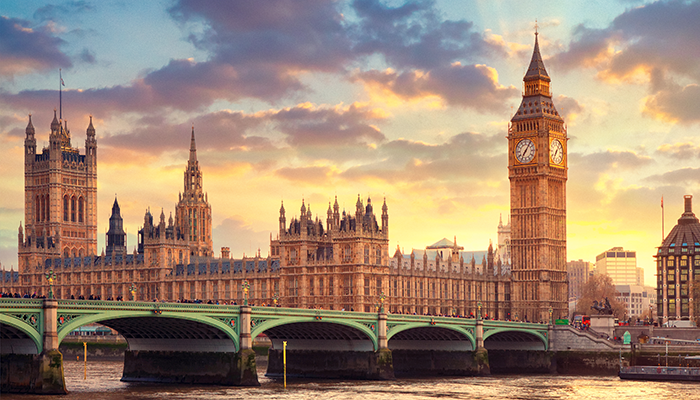
MPs are to debate the bill to trigger the great rebuilding of the Palace of Westminster. There are dozens of reasons why they might find reason to quibble with it – although the conflagration of Notre Dame should deter them from any temptation to find reasons for delay.
But the fretting and friction over the details may squander the opportunity that the upheaval represents – to reimagine in more radical terms how the eight acres on the banks of the Thames might be used.
The Parliamentary Buildings (Restoration and Renewal) Bill requires Parliament to approve the proposed works and costs
The second reading of the bill will establish the Parliamentary Works Sponsor Body to take responsibility for the building works. It will also require the Sponsor Body to form a company limited by guarantee – the Delivery Authority – to put together proposals for the restoration and the temporary exodus of parliamentarians to other places nearby, and then to carry them out.
The bill will also set up the Parliamentary Works Estimate Commission, responsible for giving the House of Commons estimates of the cost. Of all the controversies surrounding the project, this is the easiest to predict. If the anticipated final cost exceeds the funds allocated, the commission can ask the Sponsor Body to prepare a new estimate. The latest public figure is £3–6bn, but it is not hard to imagine that rising given the complexity of the work and the fact that the builders won’t know what they will find in the way of damp, insecure foundations and stonework, and the need for replacement of plumbing and wiring until they begin.
The bill will require parliament to approve the proposed works and the money in 2021 (the date is not mandated by the bill, but it is the schedule being worked towards). If both Houses agree, they would then need to secure the right to use the QEII Conference Centre for the House of Lords (the centre is a public body sponsored by the Ministry of Housing, Communities and Local Government).
The soonest that the 650 MPs and 800-plus Lords would move into their temporary homes would be the mid-2020s. The hope is that they will be there no more than six years – but estimates are kept studiedly vague.
There is no need for a vote on the temporary site for the Commons, to be developed out of Richmond House and other buildings to the north of Portcullis House. Disagreements about the design, what is sacrificed during the years of exile, and no doubt about the cost (because of how much of the detail has yet to be agreed) are the real hazards.
There are controversies about the move out of the Palace of Westminster
Planners are confronting MPs with the facilities that will almost certainly be lost during the move. Car parking is one; preserving the underground car parking would add considerably to risk and cost. The same goes for the 11th century Westminster Hall, the oldest part of the parliamentary estate. The private dining rooms are another certain victim.
But planners are considering with more sympathy the need for bars and meeting places. The area to be developed from Richmond House has barely a third of the space of the Commons, and MPs will clearly be very squeezed. Nonetheless, architects – informed by a sizeable body of academic work on the use of political spaces – are conscious that without space to meet each other through the day (and evening), MPs’ parliamentary work would change character immensely.
The nature of that meeting space matters, too. When women first became sitting MPs (1919 onwards), they had to use their own cross-party room, away from the men. Some have argued that it made them more collegiate, although others attribute that to the common challenge of being pioneers.
But the move also brings opportunities.
In the wrangling to get a workable new space for the two Houses, it is unfortunately likely that the many opportunities of redesigning the building that house the UK’s central government will be overlooked. This is a pity. The move offers a chance to experiment in a way that a centuries-old building does not – and to preserve some changes in the way parliament does its work.
The opportunity for change that seems most within reach, some MPs involved in the renovation feel, is to make it possible for MPs and peers to vote if they are on the parliamentary estate but not in the chamber itself. The constraints of the Richmond House office space may well mean that more MPs are working off the site.
If they are in joint committees or meetings with the Lords, one or the other will be on the wrong side of a security barrier from their voting chamber. The pressure to explore digital voting will rise. This could permanently change the working week, enabling MPs to spend more time in their constituencies.
Other MPs suggest looking more ambitiously at the sizes and layouts of the chambers. A ‘hemicycle’ – a horseshoe shaped debating chamber that is common across much of the world – takes up more physical space (unless, as in France’s National Assembly, the seats are in steep tiers).
But it avoids an explicit adversarial format and accommodates smaller parties without assigning them to government or opposition benches. That does, however, point to a different model of government entirely – one that might seem more natural if the UK underwent years of minority government with the growth of smaller parties.
We are not there yet. But six years is a long time in parliament.
This blog was first posted on the Institute for Government website.




















